|
Sunday:
June 6, 2004 | |
0124 GMT |
 |
President Reagan dies
President Ronald Reagan, who proposed construction of the space station 20 years ago and helped a grieving nation in the aftermath of the Challenger accident, died Saturday at his home in California. He was 93.
 FULL STORY FULL STORY
 |  |

|
 |
Hubble reveals details in heart of the Trifid Nebula
Three huge intersecting dark lanes of interstellar dust make the Trifid Nebula one of the most recognizable and striking star birth regions in the night sky. The dust, silhouetted against glowing gas and illuminated by starlight, cradles the bright stars at the heart of the Trifid Nebula. This nebula lies within our own Milky Way Galaxy about 9,000 light-years from Earth.
 FULL STORY FULL STORY
 |  |
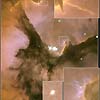
|
 |
Sources of solar hazards in interplanetary space
Life on Earth is nurtured by heat and light from the Sun. Yet life on Earth also is inconvenienced, sometimes potentially threatened, when the Sun sends out huge blasts of energy and high-speed particles. On Earth, our atmosphere and magnetic field help protect us. But in deep outer space, and on the surface of the Moon and Mars, astronauts are vulnerable to solar eruptions.
 FULL STORY FULL STORY
 |  |
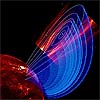
|
 |
|
Saturday:
June 5, 2004 | |
0234 GMT |
 |
Mars rover Opportunity will drive into Endurance Crater
NASA has decided the potential science value gained by sending Opportunity into a martian impact crater likely outweighs the risk of the intrepid explorer not being able to get back out. The soonest Opportunity could enter Endurance is early next week.
 FULL STORY FULL STORY
 |  |
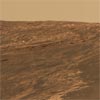
|
 |
Pinwheel Galaxy's hidden wonders revealed
Like nosy neighbors, astronomers are spying on one of the nearest galaxies to our Milky Way. In studying the Pinwheel Galaxy, also known as Messier 33 (M33), they seek not malicious gossip but new knowledge as they search for clues to how galaxies like our own are born, live and die.
 FULL STORY FULL STORY
 |  |
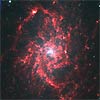
|
 |
One Delta 2 rocket gets new date; another delayed
After replacing a suspect hydraulic pump, officials have set June 11 as the new launch date for Boeing's Delta 2 rocket carrying the GPS 2R-12 spacecraft from Cape Canaveral, Florida. Meanwhile, this month's launch of another Delta 2 from California carrying NASA's Aura environmental satellite has been delayed a week due to a technical concern.
 DELTA/GPS 2R-12 MISSION STATUS CENTER DELTA/GPS 2R-12 MISSION STATUS CENTER
 DELTA/AURA MISSION STATUS CENTER DELTA/AURA MISSION STATUS CENTER
 |  |
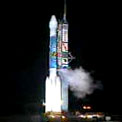
|
 |
|
Friday:
June 4, 2004 | |
0045 GMT |
 |
Proof found for gamma-ray burst in Milky Way
Combined data from NASA's Chandra X-ray Observatory and infrared observations with the Palomar 200-inch telescope have uncovered evidence that a gamma-ray burst, one of nature's most catastrophic explosions, occurred in our Galaxy a few thousand years ago. The supernova remnant, W49B, may also be the first remnant of a gamma-ray burst discovered in the Milky Way.
 FULL STORY FULL STORY
 |  |
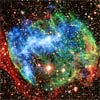
|
 |
Cassini getting ever closer to colorful Saturn
As Cassini coasts into the final month of its nearly seven-year trek, the serene majesty of its destination looms ahead. The spacecraft's cameras are functioning beautifully and continue to return stunning views from Cassini's position, 750 million miles from Earth and now 9.8 million miles from Saturn.
 FULL STORY FULL STORY
 SATURN ORBIT INSERTION TIMELINE SATURN ORBIT INSERTION TIMELINE
 |  |
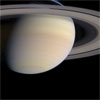
|
 |
Launch preps for NASA atmospheric satellite stalled
Delivery of NASA's Aura satellite to its California launch pad was postponed this week while engineers troubleshoot a concern with the Boeing Delta 2 rocket that will lift the $785 million atmospheric research mission into Earth orbit.
 FULL STORY FULL STORY
 |  |
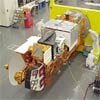
|
 |
Looking to catch stars in the act as planets form
For young stars, the peak age for planet formation is around 1 to 3 million years. By 10 million years old, their resources are exhausted and they retire to a life on the stellar "main sequence." Using telescopes on the ground and in space, a team of astronomers is studying Sun-like stars in their waning formative years. They seek to refine our understanding of planet formation by studying dusty protoplanetary disks around such stars.
 FULL STORY FULL STORY
 |  |
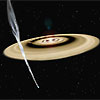
|
 |
|
Thursday:
June 3, 2004 | |
0308 GMT |
 |
Rutan announces manned spaceflight plans
Scaled Composites, the aerospace company run by legendary designer Burt Rutan, announced Wednesday that it will attempt the first manned suborbital flight of its SpaceShipOne vehicle on June 21.
 FULL STORY FULL STORY
 |  |
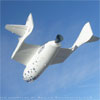
|
 |
Rover Spirit nears hills as Opportunity probes crater
More than a month into bonus time after a successful primary mission on Mars, NASA's Spirit rover has sighted possibly layered rock in hills just ahead, while twin Opportunity has extended its arm to pockmarked stones on a crater rim to gather clues of a watery past.
 FULL STORY FULL STORY
 |  |
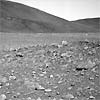
|
 |

Additional coverage for subscribers:
 VIDEO:
SPIRIT EXPLORES THE HILLS QT VIDEO:
SPIRIT EXPLORES THE HILLS QT
 VIDEO:
OPPORTUNITY DRIVES ALONG CRATER RIM QT VIDEO:
OPPORTUNITY DRIVES ALONG CRATER RIM QT
 VIDEO:
WATCH WEDNESDAY'S MARS ROVER NEWS CONFERENCE QT VIDEO:
WATCH WEDNESDAY'S MARS ROVER NEWS CONFERENCE QT
 SUBSCRIBE NOW SUBSCRIBE NOW

|
Monster lies camouflaged inside nebula's heart
Most galaxies, including the Milky Way, are filled with giant clouds of gas and dust called nebulae that appear as dark silhouettes against the starry background. Nebulae shine only when illuminated or excited by nearby energy sources.
 FULL STORY FULL STORY
 |  |

|
 |
Boeing to study Neptune missions for NASA
While Boeing is preparing to deliver a proposal to NASA's Jet Propulsion Laboratory for what could become the nation's first nuclear-fission powered exploration spacecraft, the company also is using its unique space heritage and expertise to propel robotic solar system exploration farther than Jupiter.
 FULL STORY FULL STORY
 |  |
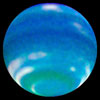
|
 |
NEWSWIRE Links to news across the internet
|
 |
Canada will launch own spy satellite -- (National Post) Canada is to send up its very own military spy satellite, part of a $65-million Department of National Defence program to join the United States Space Command's space surveillance network, the National Post has learned.

NASA's 'scramjet' funding in jeopardy -- (Hampton Roads Daily Press) NASA engineers are still enthusiastic about the record-breaking flight of the experimental X-43a craft two months ago, even as they strain to keep their research funded.
|
 |
|
Wednesday:
June 2, 2004 | |
0227 GMT |
 |
Great Observatories find black holes, hidden objects
Astronomers unveiled the deepest images from NASA's new Spitzer Space Telescope Tuesday and announced the detection of distant objects -- including several supermassive black holes -- that are nearly invisible in even the deepest images from telescopes operating at other wavelengths.
 FULL STORY FULL STORY
 |  |
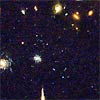
|
 |
Parallelogram-shaped galactic meal spied
Peering into the "gut" of the galaxy Centaurus A, NASA's Spitzer Space Telescope has captured in unprecedented detail this massive galaxy's last big meal: a spiral galaxy twisted into a parallelogram-shaped structure of dust.
 FULL STORY FULL STORY
 |  |
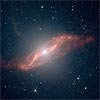
|
 |
Robotic servicing mission to Hubble considered
NASA is asking for proposals to mount a robotic mission to service the Hubble Space Telescope, the agency announced Tuesday. Earlier this year, NASA Administrator Sean O'Keefe killed plans to launch a final space shuttle servicing mission due to human safety concerns in the wake of Columbia. Read the NASA announcement:
 FULL STORY FULL STORY
 |  |
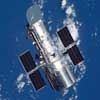
|
 |
|
Tuesday:
June 1, 2004 | |
0115 GMT |
 |
Next GPS spacecraft awaits new launch date
This week's planned launch of the next Global Positioning System satellite aboard a Boeing Delta 2 rocket has been delayed a few days so workers can replace a suspect pump.
 FULL STORY FULL STORY
 LAUNCH TIMELINE LAUNCH TIMELINE
 GROUND TRACK MAP GROUND TRACK MAP
 DELTA LAUNCH ARCHIVE DELTA LAUNCH ARCHIVE
 |  |
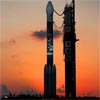
|
 |
NEWSWIRE Links to news across the internet
|
 |
Planet Venus will cross face of sun -- (AP) Ben Franklin watched it. Sousa named a march after it. Crowds jammed the sidewalks of New York to see it in 1882. But nobody alive today has ever seen the silhouette of Venus crawl across the face of the sun. On June 8, that sky show -- astronomers call it a transit of Venus -- will return for the first time in 122 years, visible from much of Earth.

Bush's pragmatic step-by-step guide to space -- (Houston Chronicle) Neil Armstrong's first footsteps on the moon in 1969 inspired universal wonder and excitement. In that moment, it seemed the unimaginable had become reality, and a course for an enterprise in space in which anything was possible was established.
|
 |
|
Monday:
May 31, 2004 | |
0001 GMT |
 |
Europe's Rosetta probe observes Comet Linear
ESA's comet-chaser Rosetta, whose 10-year journey to its final target Comet 67P/Churyumov-Gerasimenko started on March 2, is well on its way. The first phase of commissioning is close to completion and Rosetta has successfully performed its first scientific activity - observation of Comet Linear.
 FULL STORY FULL STORY
 |  |
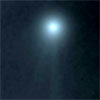
|
 |
Vega rocket one step nearer
An important step forward has just been made in the development of the European Space Agency's Vega launcher. After several months work at the Guiana Propellant Plant at Europe's Spaceport, the inert casting of the main Vega motor has been successfully carried out.
 FULL STORY FULL STORY
 |  |
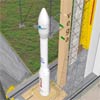
|
 |



